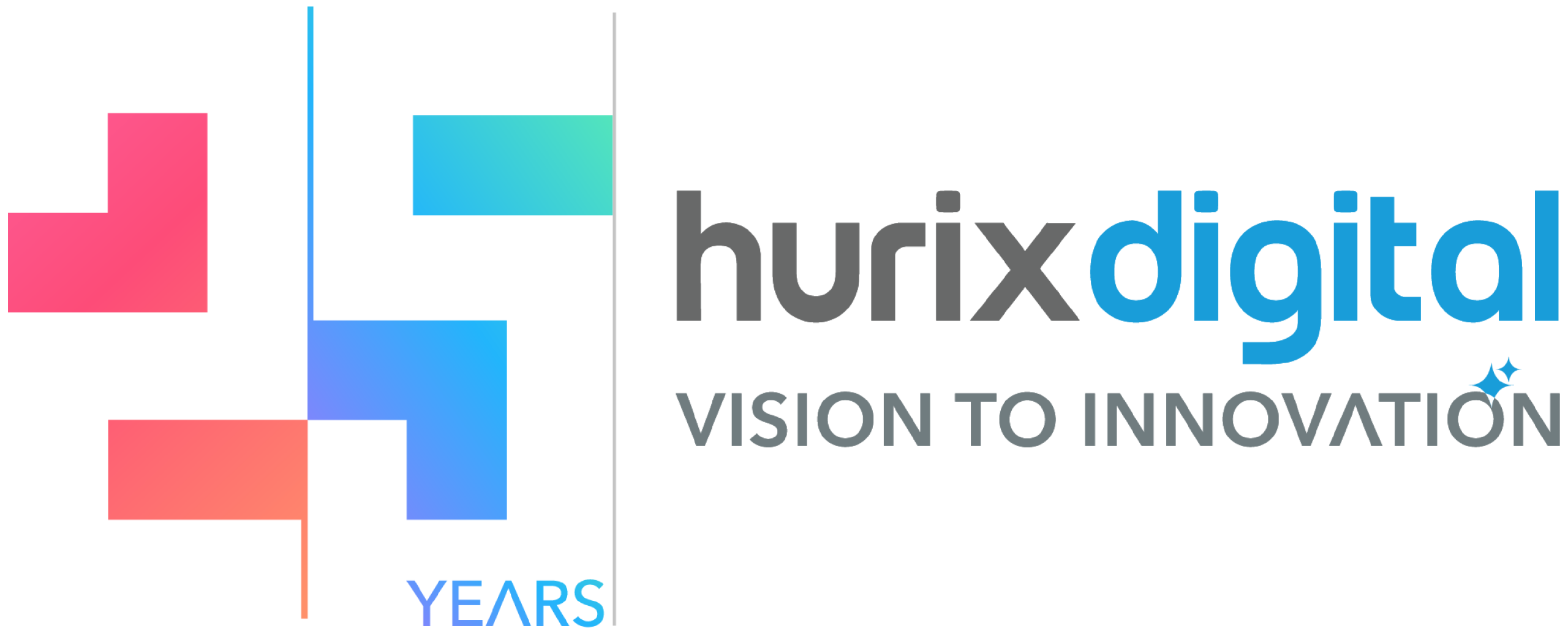
How Do Top Companies Build Better AI by Mastering Annotation Services?
Summarize with:
Ask anyone who’s truly built an intelligent system, and they’ll tell you: the lifeblood is annotated data. It seems simple at first glance, just tagging images or labeling text. But step beyond a small experiment, and the reality hits. Suddenly, you’re wrestling with fundamental anxieties. Is this data truly good enough? Can it stand up to the demands of massive scale? Can you handle all this work without lowering quality or using up resources? These issues are not just theoretical; they turn into everyday challenges that can leave even seasoned experts thinking.
Then come the deeper currents. Selecting the right platforms? It’s rarely a clear-cut choice. What about building and nurturing the team that does this critical work? Or the persistent worry about protecting sensitive information during the entire process? And as AI itself moves forward, we face its reflection: how does automation actually help us here, or even, complicate things? Taking this conversation to another level, we discuss the ethical duty of ensuring fairness, mitigating bias, and looking forward to the future.
Table of Contents:
- Ensuring Annotation Data Quality: What Are Best Practices?
- Scaling Annotation Services: How to Manage Massive Datasets?
- Calculating Annotation ROI: How to justify investment costs?
- Data Security: Protecting Sensitive Information During Annotation?
- Selecting Annotation Tools: Which Platforms Offer Enterprise Solutions?
- Managing Annotation Workforce: Talent Acquisition and Retention Strategies?
- AI in Annotation: How Does Automation Boost Efficiency?
- Vendor Selection: Key Criteria for Choosing Annotation Partners?
- Ethical Annotation: Mitigating Bias and Ensuring Fair AI Outcomes?
- Future Annotation Trends: What Innovations Will Impact AI Next?
- A Final Word
Ensuring Annotation Data Quality: What Are Best Practices?
Ensuring annotation data quality truly starts long before anyone clicks a single label. The first step involves creating clear, easy-to-understand guidelines. Think of them as the constitution for your data project.
A common pitfall, you ask? Well, assuming everyone interprets a term like “negative sentiment” the same way. What’s negative to one person might be neutral to another. So, we break it down. A lot of examples are provided, including good examples, bad examples, and tricky examples. And crucially, we define what isn’t covered, what’s out of scope. That alone saves endless headaches.
Once those guidelines are solid, the next big piece is calibrating your annotators. A good practice here is a pilot phase where annotators work on a small, representative batch of data, then come together to discuss disagreements. This goes beyond correcting errors; it involves refining those initial guidelines. We often learn more about the ambiguity in our instructions from annotator confusion than anything else. It’s a humbling, but vital, step.
The real challenge starts with ongoing quality checks. Teams often assign several annotators to review each piece of data when the task is high-stakes. If three people agree, things are likely on track. If they don’t, well, that’s a big warning sign waving at you. Disagreements become chances to improve, not failures. They often highlight either unclear instructions that need fixing or an annotator who could use more support. These are the types of problems that only a specialist can deal with and refine the guidelines based on outcomes.
Scaling Annotation Services: How to Manage Massive Datasets?
Dealing with giant piles of data that need to be tagged is no small job. At times, it may even feel like wrestling a wild river. Instead of a neat container, imagine files slipping and sliding everywhere.
The first hurdle is always ingest. You go beyond pulling in files; you wrestle with a multitude of formats, resolutions, and intrinsic data complexities. Think about video data, for instance. This involves more than just frames; it encompasses temporal relationships, objects appearing and disappearing, often across vastly different camera angles or lighting conditions. Getting raw, messy data ready for annotation takes serious upfront work. You need to normalize it, remove duplicates, and filter out the truly useless or corrupted pieces before anyone can even think about labeling it. Yes, it’s a messy, often thankless job. But skipping it guarantees chaos down the line.
Then comes the task of distribution. You’ve got your massive pool, and now you need to feed it strategically to your annotation team. That’s a recipe for burnout and inconsistent quality. A smarter approach involves intelligent batching. We’re talking about creating smaller, manageable “swim lanes” of data. A dataset can be segmented not just by volume, but also by its intrinsic characteristics, such as object density, scene complexity, and annotation type. In other words, we want to make sure annotators aren’t weighed down for hours with extremely difficult material, which would lead to fatigue and mistakes.
Quality control, as well, is not a post-hoc inspection at this sort of scale. It has to be baked in. It means constantly watching performance, spotting drifts in your annotation style or comprehension, and then feeding that back. It’s a dialogue, not a pass/fail grade. You might decide that an entire batch is bad (not because the annotators were bad, but because the label instructions were ambiguous for a specific data type). This is a find, a reason to optimize, not an issue.
Calculating Annotation ROI: How to justify investment costs?
Annotation costs real money through teams, tools, and time. So, how do you convince the bean counters it’s not a money pit?
Think outcomes first. Good annotation boosts AI accuracy. In education, that might mean a tool that nails reading comprehension scores, saving teachers hours. One firm saw its model’s error rate drop significantly after better labeling. And guess what, our service cost looked like a bargain to them! Faster launches matter too. Clean data can shave months off development, letting you beat rivals to the punch.
Risk’s another angle. Skimp on annotation, and you might end up with a biased model. This biased model will misread student handwriting from certain regions. Fixing that later costs more than doing it right upfront. Plus, well-annotated data keeps paying dividends; it can fuel future projects, stretching your dollar further.
Consider the benefits, such as higher accuracy or faster entry into markets, and add them up. It’s not an exact science; some benefits, like dodging a PR mess, are hard to price. But a rough sketch showing real impact usually does the trick. Annotation represents an investment rather than a splurge. Prove it with numbers and a dash of common sense.
Data Security: Protecting Sensitive Information During Annotation?
Protecting sensitive information during annotation is less about deploying the latest firewall and more about the messy, human reality of dealing with data. A core question constantly arises: Does the annotator really need to see this specific piece of information? More often than not, the answer is a resounding “no.”
This leads directly to the fundamental approaches of data minimization and pseudonymization. Before any sensitive data even touches an annotator’s screen, it must be rigorously scrubbed. Names become ‘Patient X’, exact dates of birth transform into ‘Year Range’, and specific locations might be broadened to general regions. In such cases, the context itself is often so rich that it inadvertently re-identifies an individual, even after careful scrubbing. Someone might recognize a peculiar case from public knowledge, and suddenly, your ‘anonymous’ data isn’t quite so anonymous to them. That’s a persistent, nagging concern that thoughtful professionals grapple with.
Then there’s the environment itself. Handing someone a raw data file? That’s simply asking for trouble. Annotation should ideally occur within a secure, controlled sandbox. Think of it as a digital cleanroom. Annotators log into a special platform where they can only see the tasks that have been given to them. They can’t download the data, copy and paste it outside the system, or even take a screenshot. Their tools are limited solely to the annotation interface. It’s about limiting agency, because you need strong control rather than questioning their trustworthiness.
And the people doing the annotating? They need to be thoroughly checked out, get a lot of training, and get regular reminders. It’s far beyond just signing a non-disclosure agreement (NDA). It’s about cultivating a culture where privacy is respected as a default. People commonly make breaches due to human error, not malicious intent. Someone may forward a snippet accidentally or not grasp the gravity of the information they are handling. So, ongoing, practical training is absolutely vital; it’s an evolving conversation, a constant reminder that every data point represents a person’s trust, a piece of their story. This entire process, frankly, is an exercise in layered defense, underpinned by a deep, almost reverent, respect for the data itself.
Selecting Annotation Tools: Which Platforms Offer Enterprise Solutions?
When a large organization looks at annotation tools, they’re rarely just seeking a basic labeling interface. No, the stakes are much higher. They need something that integrates deeply, handles vast quantities of data, and secures sensitive information. This is where the term “enterprise solution” truly earns its stripes.
Take a platform like Labelbox. It is incredibly robust, especially for complex data types like LiDAR point clouds and detailed medical imagery. It handles versioning, quality control, and offers a strong API for integration. But for all its power, one often hears about its pricing model. For truly massive, continuous annotation efforts, the costs can escalate quickly. It’s a premium offering, and organizations need to weigh that against their budget realities. Sometimes, the initial sticker shock for a truly comprehensive tool can be a real sticking point, even if the long-term value is clear.
Then there are players like V7, which have made significant strides in baking automation right into the annotation pipeline. Their focus on active learning and auto-labeling features is a compelling draw, especially for reducing manual effort on highly repetitive tasks. The user experience can feel very modern, even natural. But, like any newer platform with a lot of features, the depth may make it harder for some teams to learn, or some integrations may need more custom development than they would with a more established but less flexible competitor. Isn’t it always a perfect fit? Every tool has things it does well and things it needs to work on.
And what about the big cloud services, like Google Cloud or AWS SageMaker Ground Truth? These products differ from standalone solutions. They function as services within a much bigger system. The benefits are clear for a business that is already heavily invested in one of these clouds: data flows smoothly, security policies naturally extend, and it is often easy to integrate with existing ML pipelines. What is the trade-off? They can sometimes seem less specialized and less polished when they are just for annotation. Setting them up might take more cloud knowledge from within the company, which means a more in-depth technical look than a more opinionated, focused annotation tool.
Managing Annotation Workforce: Talent Acquisition and Retention Strategies?
Annotators keep the machine running. But they’re tricky to manage. How do you get the best and keep it?
Pay decently. It’s grunt work, not charity. But money’s just the start. Offer growth—skills training or a crack at bigger tasks. Flexibility hooks talent, too. Let them work odd hours or from home. One manager I know swears by that combo for keeping turnover low.
Retention is about respect. Show them their labels’ real power outcomes, like better learning tools at Hurix Digital. Chat regularly, not just to nitpick. Give them good tools as well to avoid clunky technology. Keep it fresh with varied jobs or input on process tweaks. It’s less about perks and more about purpose.
Work environment optimization extends beyond ergonomics. Annotation work taxes mental resources, especially with disturbing content like hate speech or medical trauma. Regular breaks, task variety, and mental health support become essential. Some organizations rotate annotators between projects, preventing burnout. Others provide counseling for teams handling challenging content. Supportive cultures where annotators discuss difficulties in maintaining long-term workforce health. Treat them like they matter, and they’ll stay.
AI in Annotation: How Does Automation Boost Efficiency?
Think back to the days before automation truly hit its stride in data annotation. The sheer grind of it. So, there was this project where we were labeling thousands of tiny objects in satellite imagery. Each one, a careful click, a drag, a precise box. This project was monotonous and involved soul-crushing work. Fatigue set in, and with it, inconsistencies. A human annotator, no matter how diligent, will drift. They’ll get tired. Their definition of “a small crack” might subtly change between morning and afternoon.
That’s where the automation comes to the rescue. It’s about taking the brunt of that repetitive, mind-numbing effort away rather than replacing people. The goal focuses on freeing up human capacity for higher-value work. Imagine a system that takes a first pass at your data. It pre-labels, perhaps with 70% or 80% accuracy, those thousands of tiny objects. Instead of drawing every single box, the human now comes in to correct them. They refine boundaries, add missed items, and delete false positives. It’s a massive psychological difference, believe me.
The machine never gets bored and works all the time. Every time, it uses the same rule and the same logic. This makes things consistent, which is very hard for a big group of people to do. Think about it: twenty annotators, each with their own subtle interpretations, working on the same dataset. The variability can be huge. Automation irons out those wrinkles. It acts as a baseline, a common ground.
Now, humans can focus their intellect on the really tough cases, the ambiguous ones that even the smartest algorithms scratch their heads over. Those are the moments where human judgment truly shines. It transforms the job from a simple input task into a more cognitive, problem-solving exercise. It’s a partnership, making the whole process faster, yes, but also far more reliable.
Vendor Selection: Key Criteria for Choosing Annotation Partners?
The first thing that pops into most minds when deciding on the right vendor is ‘quality.’ And yes, that’s paramount. But what does ‘quality’ even mean when we talk about human-labeled data? Well, that definition goes beyond hitting that coveted 99.99% accuracy. It is more about understanding the nuances of your data, the edge cases. It covers their internal quality assurance loops. Do they have a robust system for inter-annotator agreement? How do they handle disagreements? These are important questions you need to find the answer to.
Then there’s communication. Oh, how often this gets overlooked. You can have the most technically proficient annotators, but if they’re operating in a vacuum, problems will fester. Think about it: your project requirements will evolve. Your understanding of the data will deepen. You’ll find new tricky examples. Does your partner welcome these changes? Do they proactively flag ambiguities in the guidelines? A good partner isn’t just a pair of hands; they’re an extension of your team, a thinking partner.
Ethical Annotation: Mitigating Bias and Ensuring Fair AI Outcomes?
Bias can turn AI into a problem child. How do you annotate ethically?
Diversify your annotators. Same-background teams miss the same things. Defining “fair” grading across cultures or styles helps. One group found their “smart” tags favored chatty kids over quiet ones. They updated their rules fast and saw better results.
Another advice will be to test those weird cases. Does the AI stumble on rural accents or non-native speakers? Check outputs often; bias hides in plain sight. Transparency builds trust, too. Tell stakeholders you’re on it. Fairness isn’t a finish line. It’s a constant tweak to keep AI honest and useful.
Future Annotation Trends: What Innovations Will Impact AI Next?
One often wonders where this whole annotation journey is heading, doesn’t one? For years, it’s been a huge, often boring, and time-consuming process that takes a lot of people. A mountain of pictures, words, or sounds, and hours and hours of careful labeling. But the work itself is changing, almost without us noticing, right in front of our eyes.
The next significant wave, it feels, won’t be about just more humans labeling more data. It’s about AI becoming a far more intelligent partner in its own learning, and humans transitioning from laborers to astute curators. Think about active learning, for instance. We’ve had it for a while, where the model asks for labels on data points it’s most uncertain about. That’s good, but it’s not the end game. The innovation we’re seeing, and frankly, desperately need, moves towards something smarter: not just “what am I unsure about?” but “what data point, if labeled, will give me the most impact on my performance?” It’s about identifying the truly high-leverage samples, those messy, ambiguous cases that teach the model a disproportionate amount.
A Final Word
Creating useful AI goes far beyond writing lines of code; it starts with great data. Whether you’re wrestling with messy datasets or trying to scale up fast, quality annotation is what keeps your projects on track. The right support can turn those headaches into opportunities, helping your business create solutions that actually hit the mark.
That’s where Hurix Digital steps in. We get the real-world struggles of AI integration and data labeling, and we’re here to lighten the load. Check out our data annotation services or schedule a call now to see how we can boost your next big idea.
Summarize with:

Vice President – Content Transformation at HurixDigital, based in Chennai. With nearly 20 years in digital content, he leads large-scale transformation and accessibility initiatives. A frequent presenter (e.g., London Book Fair 2025), Gokulnath drives AI-powered publishing solutions and inclusive content strategies for global clients
 A Space for Thoughtful
A Space for Thoughtful 
